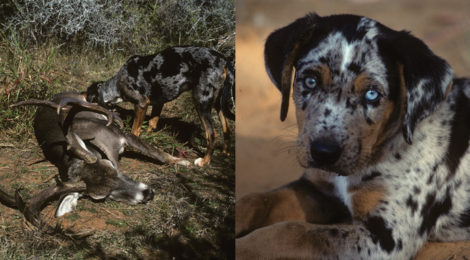
A Blood-Trailing Dog
Research confirms using a trained dog expedited the process of recovering wounded deer.
Story and Photography by Bob Zaiglin
There’s nothing more discouraging than expending all one’s energy locating an outstanding buck only to make a bad shot on the animal. Unfortunately, wounding an animal is inevitable if one hunts long enough. What’s critical, however, is the effort exerted to recover the animal. Some sportsmen have the skill to follow a blood trail, but for the majority of deer hunters, a wounded deer that fails to drop is history. After a short search for the deer, they may even convince themselves that they actually missed the animal. Some will go as far as soliciting the aid of a helicopter to recover a trophy animal when the most effective method is to rely on man’s best friend.
The employment of blood-trailing dogs was investigated in South Carolina by Deer Project Supervisor Charles Ruth and Haywood Simmons. According to these researchers, it took 603 shots to harvest 493 deer, demonstrating an 81.7% shooting success with 50%, or 247 of the deer shot, traveling an average of 62 yards before dropping. More important was the fact that of 221 deer recovered dead, 61 (28%) left no discernible sign “hair, blood, etc.” in the vicinity of the shot. By using a trained dog, the researchers expedited the process of recovering deer. They also recognized significant differences in distances deer ran depending on whether they would be recovered; (a) easily (46 yards); (b) with some difficulty (85 yards); or (c) not recovered without the aid of a dog (147 yards). Their findings demonstrated that a trained dog increased the harvest by approximately 20% because it almost eliminated unrecovered dead deer and crippling loss.







